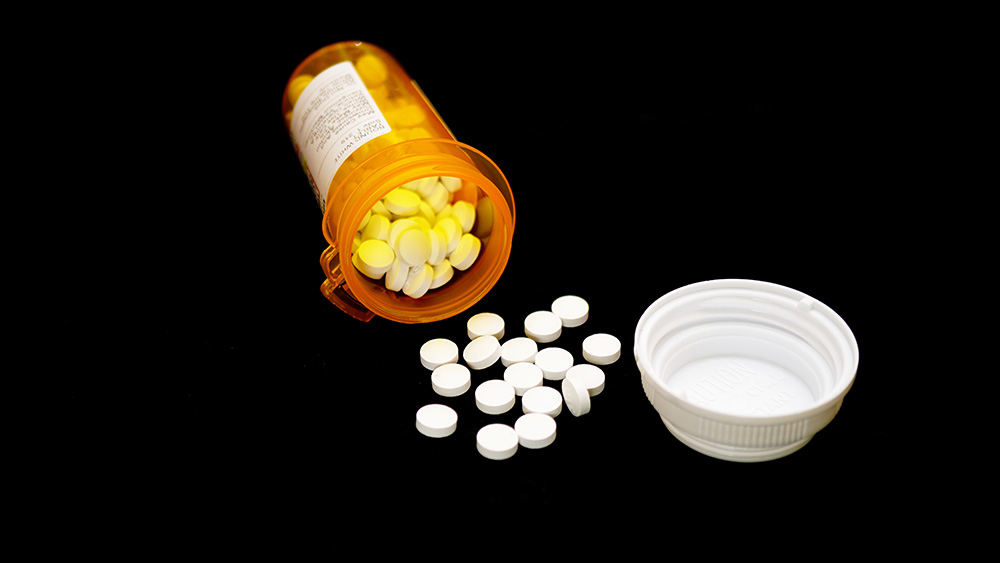FACT: The FDA has approved numerous drugs derived from VENOM, including from snakes
04/15/2022 / By Lance D Johnson

It’s not a theory. It’s not sensationalism. Snake venom is commonly used in modern medicine. The Food and Drug Administration (FDA) has approved numerous drugs derived from venom. The venom of pit vipers, rattlesnakes, sea urchins, jellyfish, cone snails, leeches, scorpions, anemones, and Gila monster lizards all contain complex enzymatic and non-enzymatic compounds that have specific physiological functions in the human body. Animal venom contains peptide toxins that are used to target ion channels and membrane receptors. These venom peptides target various hemostatic pathways with high selectivity and affinity.
Proteins and peptides from venom are being used to create new, profitable drugs
Venom contain up to 500 active pharmacologic compounds that can be synthetically reproduced. Up to 50 million different compounds can be isolated for use in pharmaceutical drugs. Modern science has only catalogued approximately .01% of the toxins found in animal venom. These toxic natural substances are vastly under-explored and are yet to be fully understood in medical research.
A study titled, “Biomedical applications of snake venom: from basic science to autoimmunity and rheumatology,” reports that snake venom is used to develop diagnostic tests, to study pathogenesis of disease, and develop drugs for the immune system. “Some of the effects of venoms may have an impact on different physiological aspects, mainly related to the immune system, not visible during envenomation,” the study authors wrote.
The proteins and peptides in snake venom exhibit enzymatic properties such as proteolytic enzymes, arginine ester hydrolase, thrombin-like enzymes, hyaluronidase, phospholipase A2, acetylcholinesterase, nucleases, and L-amino-acid oxidase. The proteolytic enzyme activity affects the hemostatic system in humans.
Hyaluronidase, widely considered a “spreading factor,” is present in nearly every snake venom. Hyaluronidase is what destroys the extracellular matrix at the site of a snake bite. It helps distribute other toxins into the blood, while damaging local tissues.
Phospholipases A2 enzymes are also ubiquitous in snake venom. These enzymes speed up the digestive process, allowing snakes to devour their prey. Their pharmacological effects include changing the permeability of cell membranes.
Snake venom also contains thrombin-like enzymes that exhibit coagulant (clotting) activities which cannot be undone by blood thinners like heparin. Acute renal failure is a serious complication from Russell’s viper snakebites. This snake venom enzyme contains factor X activator (RVV-X) which coagulates the blood and causes deadly changes in renal hemodynamics and renal functions. Common drugs also cause renal failure, and the use of venom is these products is often concealed.
Common pharmaceuticals use snake venom, and their side effects often mimic envenomation
Snake venom is currently involved in clinical trials for a variety of current and upcoming drugs. Snake venom was used to make Captopril (Enalapril), Integrillin (Eptifibatide), and Aggrastat (Tirofiban). These are all FDA-approved drugs. Captopril is a high blood pressure treatment that also causes dizziness, lightheadedness, loss of taste, lethargy, swollen lips, muscle weakness, fever, chills, and may cause serious liver and kidney damage. Integrillin is used to treat acute coronary syndrome but also causes fever, chills, headaches, confusion, bloody stools and bleeding out the nose, mouth, vagina, or rectum.
Many of these same side effects are also prevalent after envenomation, but the drug companies don’t mention the use of venom in their products. Dr. Bryan Ardis claims these same deadly symptoms are coming from Remdesivir because its made of snake venom proteins and peptides, too. This drug was notoriously approved by the FDA for all covid-19 diagnoses. It has caused widespread liver damage, among other health issues, that have led to deadly sedation and ventilation protocols that have driven up the death count. The drug is currently being forced onto pediatric populations in US hospitals, as other treatment options are barred.
Sources include:
Submit a correction >>
Tagged Under:
Big Pharma, biological agents, biotechnology, bioweapon, blood clotting, coagulation, codon similiarities, corruption, envenomation, FDA, king cobra, kraits, liver damage, pharmaceutical fraud, Prescription drugs, remdesivir, snake venom
This article may contain statements that reflect the opinion of the author
RECENT NEWS & ARTICLES
PrescriptionDrugs.News is a fact-based public education website published by Prescription Drugs News Features, LLC.
All content copyright © 2018 by Prescription Drugs News Features, LLC.
Contact Us with Tips or Corrections
All trademarks, registered trademarks and servicemarks mentioned on this site are the property of their respective owners.



















